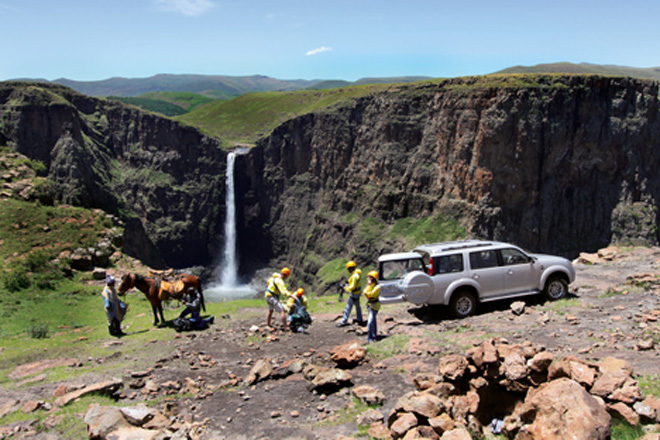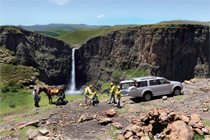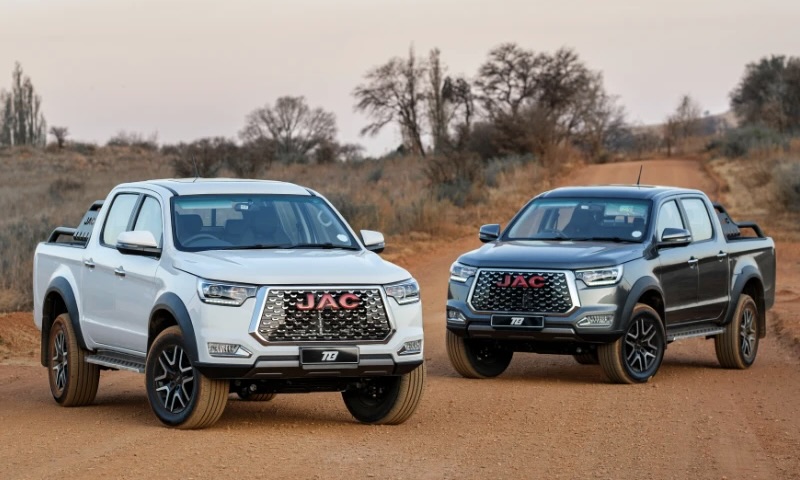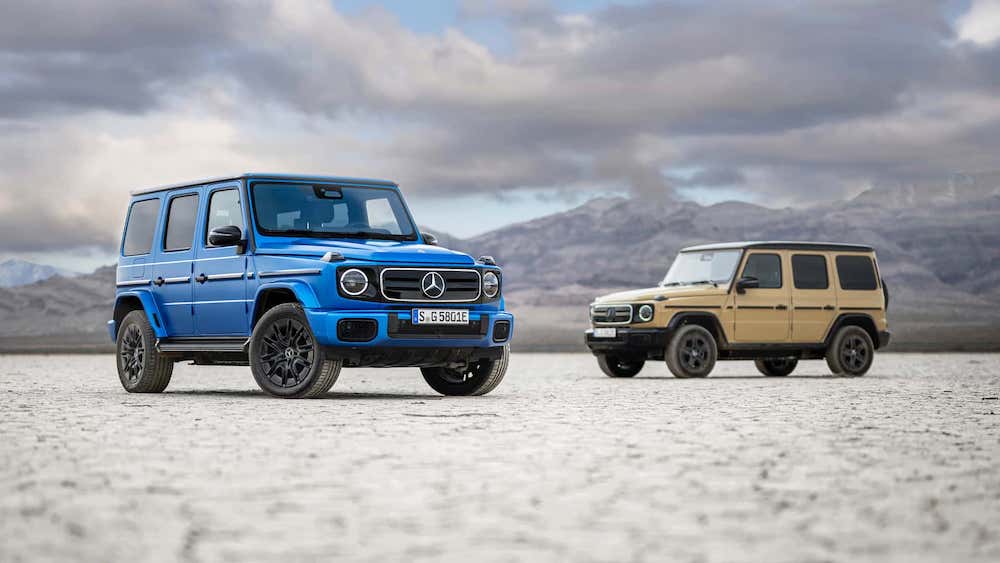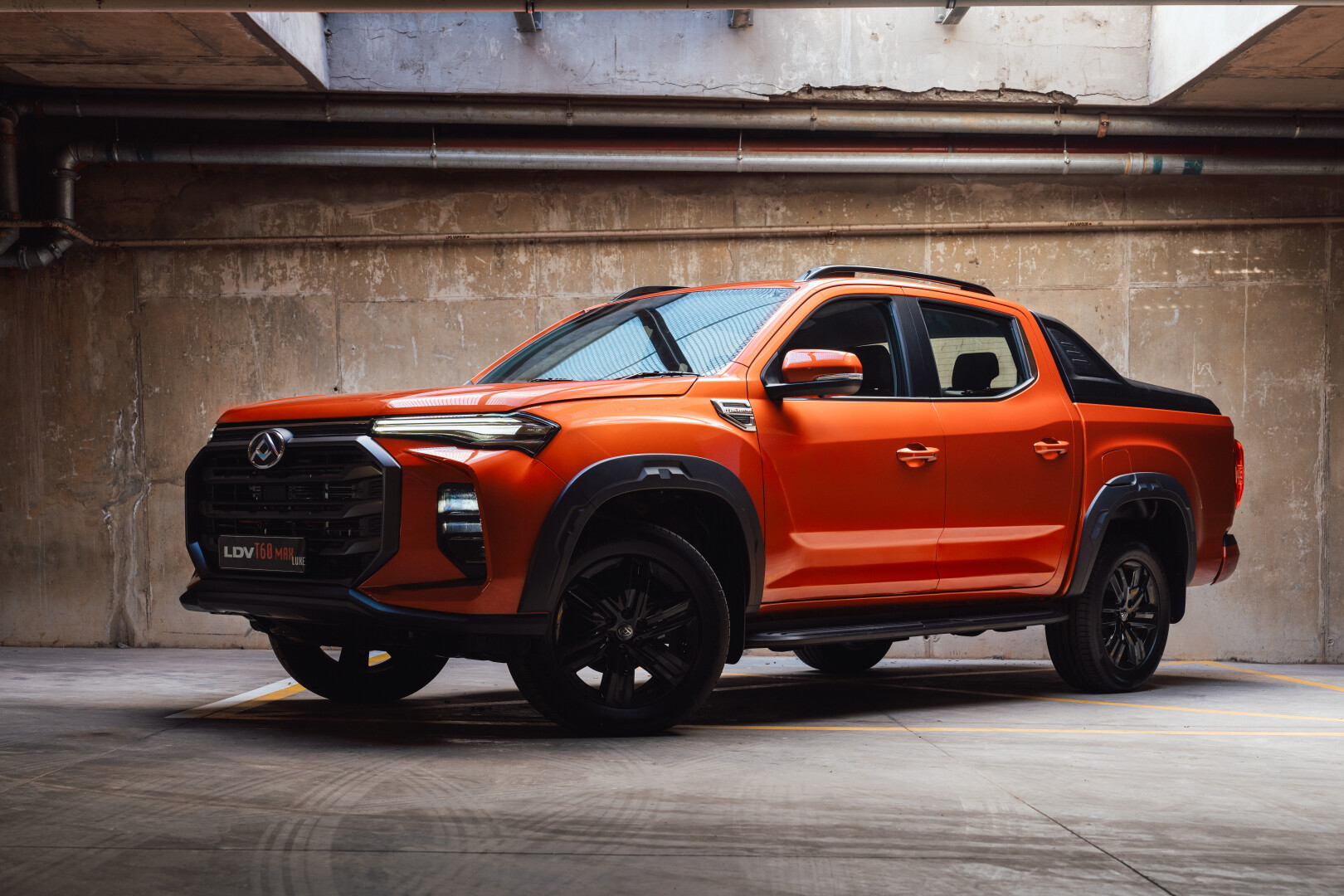Text: Danie Botha
Photography: Jannie Herbst
Three hours, the man in Maseru said.
Three hours to cover 130 kilometres.
He added: “In Lesotho nothing happens quickly. Here distances are not measured in kilometres, but in time.”
Three hours? How bad can the roads be? Rented Volkswagen CitiGolf and Toyota Tazz hatches are said to make this journey to the town of Semonkong, situated in the heart of Lesotho.
Driving out of the bustling hollow of Roma in the new Ford Everest and faced with a steep, tarred mountain pass, filled with potholes and the tar mostly breaking up, we agreed that brave CitiGolf and Tazz drivers could indeed traverse this section successfully.
When the broken tar eventually gave way to a 65km stretch of gravel, the road was initially in good nick. Then it got worse. And later even worse.
Extremely rocky in places, with deep ruts. Narrow and winding, with water-filled ditches. Very steep in places, as the track winds above 2800 metres above sea level. Not the kind of tracks we would like to tackle in a small hatch. A tough bakkie, sure.
The kind of terrain then, where the Ford Everest 4×4 should be in its element, since it is based on the tough Ford Ranger bakkie.
It was.
The suspension, comprising double wishbones up front and leaf springs and stabiliser bar at the back, is the same as used in the Ranger bakkie, albeit with some fine-tuning to ensure a more supple and compliant ride. It handled the corrugations, the ruts and the rocks with aplomb, and with a solidity that inspired confidence.
Also playing a starring role in this performance was the Ford’s 3,0-litre Duratorq turbodiesel engine. In our books this engine is the best all-rounder in the double cab segment, where it powers both the Ford Ranger and Mazda BT-50.
It delivers 115 kW of power at 3200 r/min, which places it behind both rivals, the Toyota Fortuner and Mitsubishi Pajero Sport (each with 120 kW). But it is the class-leading 380 Nm of torque, available from 1800 r/min, the engine’s tractability from low engine speeds, its overall refinement and its un-diesel-like appetite for higher engine revolutions that earns it top marks in our books.
In our Everest 4×4 XLT the engine transferred its power via a five-speed manual gearbox either to the rear wheels only, or to all four wheels. We stuck to 4×2 though, preferring to keep the four-wheel drive option with its remote-locking front hubs on the reserve bench for when the going got even rougher, which it surely would, in the days to come.
We completed the testing journey to Semonkong in just under three hours, even after taking plenty of time to stop and admire the stunning scenery along the way.
We had crossed over the Thaba Putsoa mountain range, which boasts peaks that stand over 3000 metres high. Traditional huts, colourful and friendly horsemen on their colourful steeds, and a back-to-basics ethos form the backbone of rural Lesotho, land of the once beleaguered Basotho people who so successfully fended off the military attentions of the Zulus, the Ngwane, the Korannas, the Boers and the British in the 19th century.
It is beautiful.
We arrived at Semonkong Lodge, situated in the valley below those high peaks, on the banks of the Maletsunyane River.
And this is where it got really interesting. Guinness World Record interesting.
The lodge is home to the highest commercially-operated single-drop abseil in the world, right alongside one of the highest single-fall waterfalls in Africa, the Maletsunyane Falls.
All 204 metres of it.
Strict safety regulations require a half-day training course on a “tame” 25 metre cliff-face next to the lodge to prepare prospective abseilers for that descent into the abyss.
With no time to do the training course, and with a keen sense of self preservation, we decided to second 22-year-old Elzet Wessels, the lodge’s resident chef and a much more camera-friendly prospect than the Leisure Wheels crew, to do the abseil.
But to get to the abseiling base point the following morning, the Ford’s 4WD system would have to stand up and be counted.
On form, and in shape
“Seven seats!”
It was the next morning and Semonkong Lodge owner Jonathan Halse had just realised the Ford Everest boasted a third row of seats.
“We need something like this. We cart guests around in our old Toyota Land Cruiser, but the Ford? this would really be nice. And it looks rugged too, as if it will last here in the mountains,” Jonathan said.
It is indeed rugged and tough, we concurred. And yes, it looks it too.
To say that the Everest is an object of modern design beauty would be like saying that a Volkswagen Beetle is really a Porsche.
It just isn’t.
“Function” seems to have determined the Everest’s shape.
Let’s start at the front. Here it is all Ranger bakkie, albeit with a few unique, chromed finishes. It’s nice, clean and robust, but without the ability to make onlookers faint from delight like the young ladies used to do when The Beatles made their on-stage appearance.
The side and rear views are the more controversial ones. Here it is more square and bulky than its direct competitors, no matter through what glasses one looks. A sleek roof-rail system, 16-inch alloy wheels and the obligatory side-steps add the required glitter.
But the square design, instead of more extravagant, sweeping lines, does have an advantage, and it has everything to do with the interior. The Everest’s cabin is vast, creating a spacious environment for its seven passengers.
For instance, passengers in the last row of seats still have 888mm of headroom, 722mm of legroom and 1444mm of shoulder room to work with. And when all seven seats are filled, there is still a bit of boot left. Not very much boot, but more than many other seven-seaters.
Added versatility comes in the form of a 50:50 split second row of seats, while all the rear seats can be folded away or removed to create a truly cavernous loading area.
Ford Ranger owners will immediately feel at home in the front pews of the Everest, because it is all Ranger. However, in the Everest application the dash comes in a two-tone colour design and the standard black is off-set by beige to fit in with the rest of the vehicle’s “camel” leather upholstery.
Standard luxury and safety amenities include air-conditioning with separate controls for all three rows of seats, a high-quality front-loader CD sound system with an auxiliary jack for MP3 players, electric windows all round, power steering and four airbags.
The centre console between the front seats boast oodles of storage space and the compulsory cup holders (four in the front) as well as the two sticks to select gears and switch between standard 2WD, high-range 4WD and low-range four-wheel drive. The handbrake is situated next to the steeringwheel, and is a “pull-and-turn” item.
“It’s a good looking vehicle. But how good is it off-road?”
Jonathan was obviously taken with the Everest. And it again demonstrated that different people look at different vehicles in different ways.
“Let’s go and find out,” we said.
With the Everest’s last row of seats folded up, the abseiling crew loaded the Ford with all their gear. We expected a rope or two, but the Everest was packed to the rafters with heavy bags of abseiling tackle. It looked like a serious business.
You want us? to go down where?
The turn-off to the track that leads to the Maletsunyane waterfall is a 30 minute drive from the Semonkong Lodge, on a mostly smooth dirt road. This road snakes its way along the mountain slopes, with tight hairpin corners offering spectacular views.
It was here that the Ford’s greatest virtue stepped up to the plate: the 3,0-litre Duratorq turbodiesel engine. Packed with abseiling tackle and people, the Everest idled over the steepest gradients, with the smooth oilburner’s ability to pull strongly from just above 1000 r/min pressing some more buttons in Jonathan’s corner.
“It’s strong and smooth, but rugged and tough at the same time! How much did you say it was?” he asked.
“R365 000.”
“R365 000. That’s a lot of money,” he sighed.
“Sure it is. But one has to compare apples with apples. The Everest 4×4 is still more affordable than its direct competitors,” we countered.
“There’s the turn-off. Now we’ll see,” said Jonathan.
It was finally time to hook 4WD, and we went straight for low-range too, after eye-balling the track that would lead us down a steep mountain side lined with rocks.
At first the track seemed rather tame, and for a moment we thought that Jonathan’s idea of 4×4 and our idea of 4×4 were not quite on the same page.
Then it turned bad. Really bad.
The Everest edged downwards, scaling rocks, idling through dongas. It didn’t falter, as we used up nearly every available millimetre of the 216mm ground clearance.
Finally, we arrived at the cliff’s edge and watched in awe as the Maletsunyane River’s water cascaded elegantly into the pool far below. For once the tourist brochure was spot on: this place is indeed something to behold.
